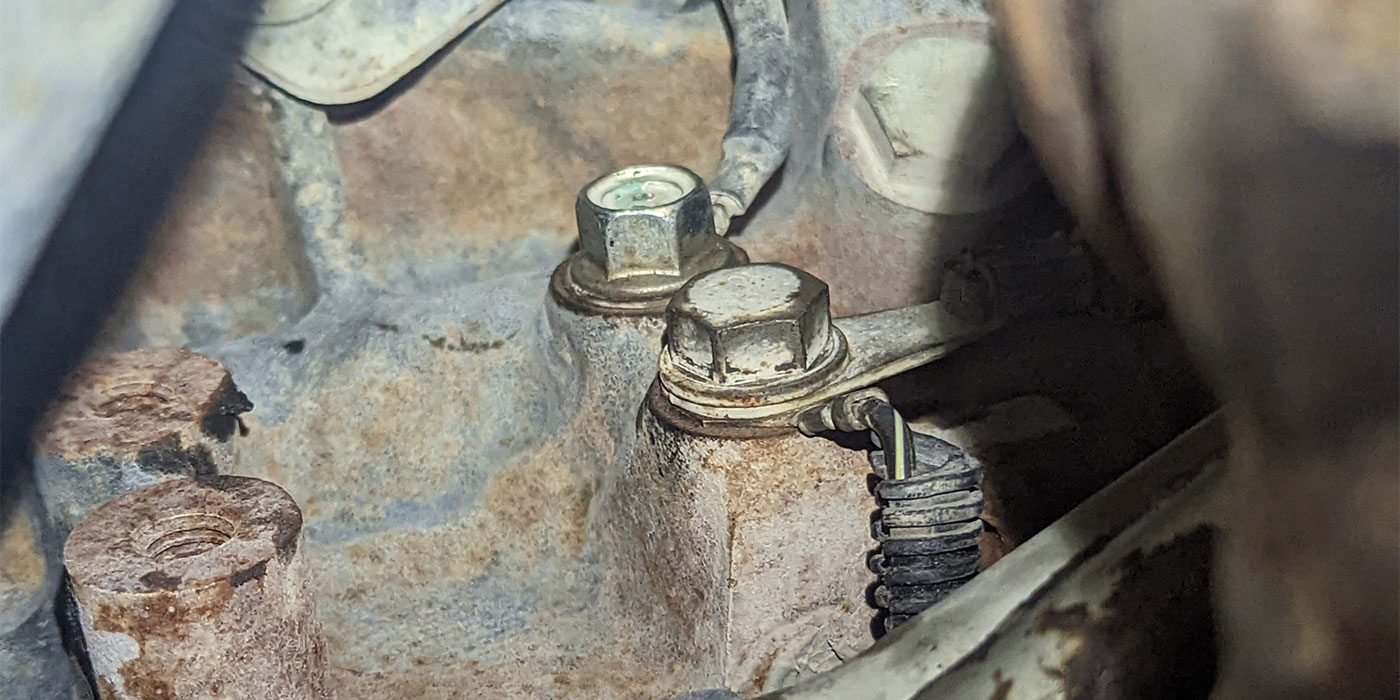
R&R Tech
- Subject: Rough noise/feel at 45-50 mph
- Vehicle Application: Dodge Caravan
- Essential Reading: Diagnostician, R & R
- Author: Dana Deeke
A mid-’90s Dodge Caravan came into the shop with the complaint of a rough noise/feel when driven above 45-50 mph. The van had been into a couple of other local shops in an attempt to find the noise with no success, and the customer was getting frustrated.
As normal, I started with a road test to see whether I could duplicate the customer complaint. Sure enough, upon reaching 45 miles per hour the van started to make a low growling sound and you could feel a little vibration through the steering wheel. It was time to get the van inside and do a visual inspection.
I started by inspecting the transmission and engine mounts to see whether they were cracked, broken or sagging. Though the mounts did not look like new, none was broken, and I did not see anything that looked as if it would cause the noise or the vibration that I was experiencing. I decided to take one of our R&R technicians along for another road test to see whether he could confirm what I was hearing and help me pinpoint the noise.
Again the noise started around 45 mph. The technician I had riding with me indicated that the noise did not seem to be coming from the passenger side. Like me, he could not narrow it down to a probable location. I found that changing the load on the front end by swerving slightly back and forth had no effect on the noise. However, I did notice that once the noise started its intensity did not change with increased speed, but when I reduced the speed below 45 mph the noise would gradually fade and then stop. What next?
I brought the van back inside, put it on the lift and let it run while listening underneath for any unusual noises. I ran the van up to 45 mph, and no noise. This was getting interesting. There was a loud noise that needed road speed to make it occur, but more road speed did not make it worse and it would not make the noise with just the drivetrain moving. The vehicle itself had to be moving.
This is when I started to look at things a little differently. Was it possible that air moving over the vehicle was somehow creating the noise? I started to look at items like the trim around the windows, the wiper blades and other non-drive parts.

You may be a top-rated technician, but now is where it is sometimes better to be lucky rather than good.
It was cool when the vehicle came in, so the air conditioning had not been turned on. It was starting to get warm while I was sitting there in the shop so I turned on the air conditioning.
Suddenly there was a loud bearing-type noise coming from the cooling fan. The sound did not match what I was hearing on the road, but it did pique my curiosity.
I wondered whether this was the culprit; maybe it just sounded different on the road. I pulled the fan relay to prevent it from engaging and started out on another road test.
Much to my disappointment the noise still occurred. What the heck? I went back under the hood and turned the fan by hand. It felt really rough, and that is when it hit me: Maybe the fan running at full speed didn’t make the same sound, but what about when the fan was not engaged but air entering the grille of the moving vehicle would turn the fan at a much slower rate?
It was time for one more road test. I left the fan relay out, but this time I put a wire tie around the fan so it could not turn. Bingo – no noise! The air moving through the grill was turning the fan slowly, and the bad bearing was the cause of the noise.
This explained why the car had to be moving at highway speed to make the noise and why changing the load on the front end by swerving would not change it, as well as why it would taper down and then quit as road speed dropped.
It was a stroke of luck that I turned on the air conditioner. Otherwise, I am not too sure I would have suspected the fan of causing this problem.
So sometimes it truly is better to be lucky than good.

Dana Deeke has been with Certified Transmission for more than 20 years and is the diagnostician at the company’s retail location in Lincoln, Neb.













